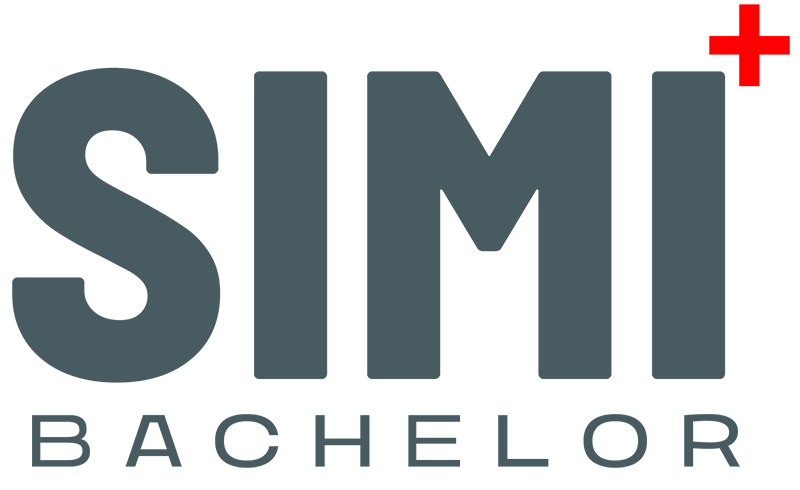
Supply chain leadership professional (L6)
Supply chain leadership professional (Level 6)
Procuring, producing, moving and delivering a product or service from a supplier to a customer or end-user.
Level 6 RQF
Details of standard
Supply chain leadership professional
Summary:
Supply chain leadership professionals oversee the procurement, production, transportation, and delivery of goods and services from suppliers to end users across the globe. Their role is crucial in integrating the operations and processes of customers, distributors, manufacturers, partners, regulators, and sub-suppliers within and between organisations, cities, and countries to build a seamless, efficient end-to-end supply chain. These professionals possess both global and domestic (UK-wide) capabilities, enabling them to lead with effectiveness, facilitate trade efficiently, and manage supply chains successfully. They excel in collaboration—working productively with people and organisations—and in optimising the use of information and resources to achieve operational excellence.
Typical job titles include:
Chief Supply Chain Officer – Oversees the entire supply chain strategy and operations.
Supply Chain Executive – Manages supply chain functions to ensure efficiency and cost-effectiveness.
Supply Chain Management Lead – Coordinates supply chain teams and drives process improvements.
Demand Planner – Forecasts product demand to balance supply with customer needs.
Employers involved in creating the standard:
Amazon (was M&S), Argos, Arla Foods Ltd, Ashwoods, Asos, BA, Bohler Uddeholm, Ceva Logistics, Coca Cola, Connect Group Plc, DHL, Dixons Carphone, Fairy Glam, fitflop, Florette UK & Ireland, Halfords, Howden Joinery Ltd, Hoyer Group, James Kemball, John Lewis, Kuehne & Nagel Ltd, Lisi Aerospace, Macandrews, Marks & Spencer, Morrisons Plc, Muller, Nestle, Network Rail, PD Ports, Perkins Engines Co Ltd, Pladis – UK & Ireland, Raytheon, Regatta, RHA, Robert Dyas, Royal Mail, Sainsbury’s, Siemens, SIG plc, Smiths News, Southern Water, Thames Clippers, TJX Europe, Travis Perkins, Uniserve Airfreight Limited, Uniserve Group, Uniserve Limited, Univar, Vijay Fashions, Wincanton, XPO, Yodel
Knowledge:
K1:
The principles of inventory, supply and demand planning and associated metrics, such as on-time, in-full, error-free and on-shelf availability.
K2:
Methods of forecasting including effects of fluctuations and seasonality and use of scheduling techniques.
K3:
The value of targeted research on supply chain dynamics.
K4:
The principles of supply chain strategies, delivery models and modes and their impact on business performance.
K5:
How the value proposition of the product and the market affects supply chain strategies and service operations for the end customer.
K6:
How to use contemporary market, product and supply chain ideas to flex the supply chain network design.
K7:
The specifics of budgeting, profit and loss reporting and cash flow forecasting in complex supply chains.
K8:
How procurement processes impact across the supply chain to ensure cost efficiencies, security of supply, continuity of service and mitigation of risk.
K9:
The range of sourcing strategies for managing cost, quality, service and time across supply chain networks.
K10:
Value chain, end-to-end and multi-channel supply chain trends in cross-border sourcing.
K11:
Options for different inventory channels to markets, factoring in constraints, cost, flexibility, quality and speed.
K12:
The different commercial, environmental, ethical and social contexts of manufacturing, storing, distributing and selling across an extended supply chain.
K13:
The optimal supplier-to-customer supply chain structures.
K14:
The value of alternative solutions that impact positively on time and cost, on end users and all parts of the supply chain.
K15:
The ethical, environmental, political, social, economic, technological and legal implications of operating in a supply chain life cycle.
K16:
The nature and scope of technologies that can drive supply chain behaviour including virtual networks.
K17:
Where to leverage investment, and seek specialist advice, in supply chain technology.
K18:
The worth of modelling and simulation as a key enabling tool when applied to supply chain management problems.
K19:
The impact of national and international policy frameworks and legislation including employment, health and safety, security, environment, quality, common transport policy, tariff and taxes, trading protocols, customs classification, contracts and insurance.
K20:
The importance of tracking and recycling and e-commerce practices.
K21:
The value of asset recovery and related costs.
K22:
The 7 “R’s” of sustainability.
K23:
The requirements for supply chain and network change using contemporary supply chain thinking.
K24:
The concepts of supply chain network coordination and leadership and their application to practice.
K25:
How supply chain visibility and brand appeal can be raised by harnessing knowledge exchange.
Skills:
S1:
Determine the benefits of insourcing, offshoring, or outsourcing.
S2:
Gather, analyse, interpret, and use data from across the supply chain to propose and make effective decisions.
S3:
Source and plan optimal transport solutions.
S4:
Actively integrate and use data across enterprise lines.
S5:
Develop differentiated supply chain strategies aligned with business units or functions to achieve long-term sustainable growth.
S6:
Use end-customer insights to design and evaluate end-to-end supply chain networks.
S7:
Use current market and product information to influence and challenge supply chain network design.
S8:
Leverage and capitalise on supply chain assets to achieve financial targets.
S9:
Drive cost efficiencies and improve service levels across the distribution network.
S10:
Practise sustainable and ethical sourcing and buying decisions.
S11:
Control information and material flow to ensure on-time, in-full delivery.
S12:
Apply appropriate inventory control techniques and tools.
S13:
Identify ways to minimise costs and apply Lean principles while optimising service.
S14:
Develop strategies for managing inventory optimisation and rationalisation across the extended supply chain.
S15:
Implement supply chain changes in response to variations in production, scheduling, and demand.
S16:
Collaborate with manufacturing functions to meet quality, time, and continuity standards.
S17:
Manage inbound and outbound logistics and distribution networks.
S18:
Design alternative supply chains to enhance resilience and continuity of supply.
S19:
Plan activities for receiving, storage, replenishment, order-picking, and dispatch.
S20:
Identify and adopt next-generation software and manage potentially disruptive technologies.
S21:
Align IT innovations with business needs, including global sourcing and international trade contexts.
S22:
Meet the challenges of selecting, developing, implementing, and applying technology effectively.
S23:
Provide guidance on environmental and legal compliance while maintaining a strong focus on risk reduction and safety management.
S24:
Communicate business purpose and values and define accountabilities for contract formation and negotiation.
S25:
Introduce innovative methods for distribution, delivery, and returns while managing associated risks.
S26:
Implement the 7 “R’s” of sustainability: remove, reduce, reuse, renew, recycle, revenue, and read.
S27:
Maintain and enhance the competitiveness of the supply chain.
S28:
Collaborate, coordinate, and communicate supply chain priorities with finance, HR, IT, sales, marketing, and key partners.
S29:
Initiate strategic and operational value-adding processes through effective project and task management.
Behaviours:
B1:
Be flexible and adaptable to changing business requirements, with a strong commitment to achieving supply chain optimisation.
B2:
Adopt cross-functional and cross-company collaboration to strengthen supply chain connections and interdependencies.
B3:
Promote an inclusive, safety-first culture in the workplace and throughout all supply chain activities.
B4:
Champion new opportunities for business growth while proactively identifying and reducing supply chain-related risks.
B5:
Be a persuasive negotiator and maintain approachability with all partners and stakeholders across the end-to-end supply chain.
B6:
Act as an ethical role model, recognised for promoting sustainable development within the global supply chain community.
Bachelor of Logistics & Supply Chain Management (Honours)
Bachelor of Logistics & Supply Chain Management (Top-Up & 2nd Degree)
All National Occupational Standards
All Undergradute Programmes
Enquiries to SIMI Swiss
Please submit your request. All information provided will be treated with strict confidentiality in compliance with the GDPR.
Columbus Downtown
8353 Sierra Avenue • Columbus, CA 91335
Phone: (907) 350-7400 • Monday – Thursday, 8:00 am – 6:00 pm
Useful Links
Quick Links
- Request a 311 Service
- Departments
- How do I…
- Icons made by Zlatko Najdenovski from www.flaticon.com
